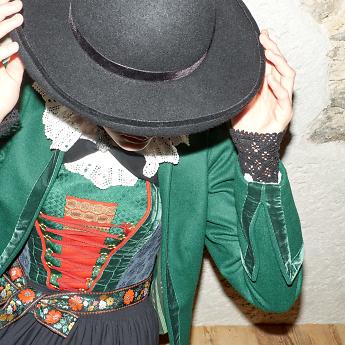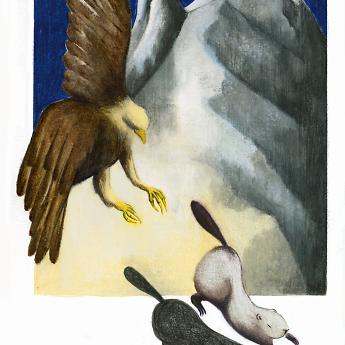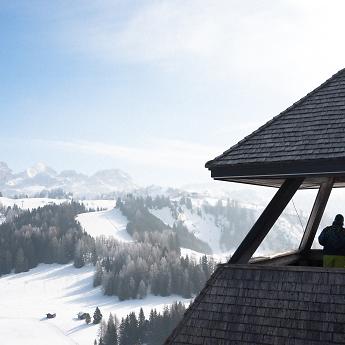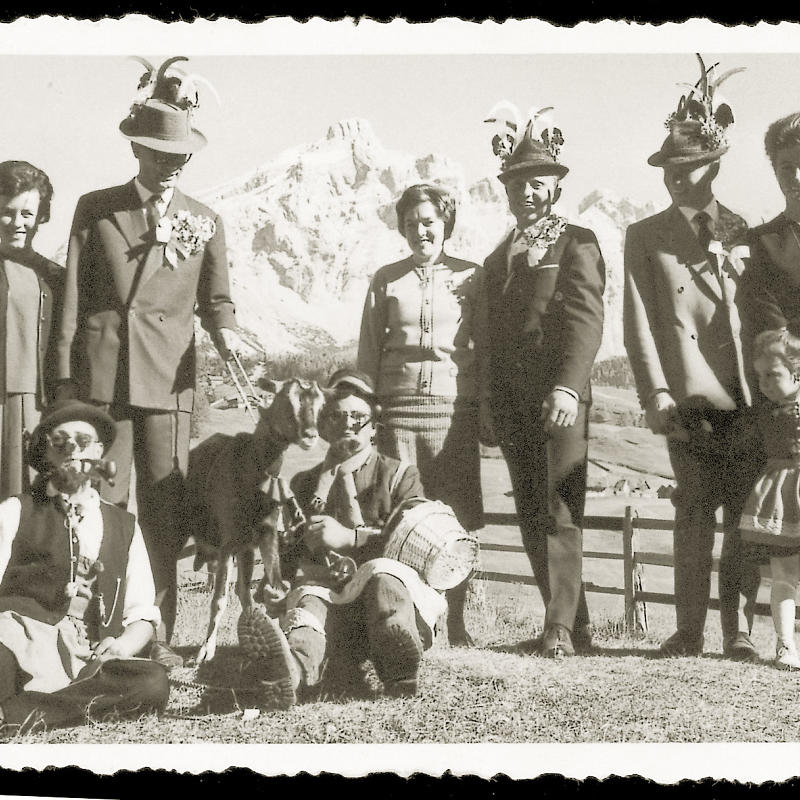
The Ladin language
A cultural legacy
Language is a fascinating and complex system of communication. It’s what makes us human and sets us apart from animals. Language – the combination of words according to a set of rules – allows us to achieve the most incredible things: we can speak, write and think. We can tell stories, write poetry and fantasise, we can debate, argue and curse. We can flatter and manipulate each other; we can plan our future and explain the past. I speak, therefore I am! The possibilities are seemingly endless.
According to the latest research, there are around 7,000 languages in the world – and new ones are still being discovered. The diversity of speech sounds and grammatical structures is enormous. Linguists continuously study, analyse and compare these languages to understand where they come from, how they have evolved and whether there are universal principles that connect all the world’s languages. The richness of this topic is especially apparent here in South Tyrol. In an area of just 7,400 km 2 with a population of 532,616, there are three official languages and over 40 dialects. Among them is a very special linguistic gem: Ladin. Alongside German and Italian, it is one of South Tyrol’s three official languages.
But languages, too, are at risk of dying out. According to official estimates by the UN organisation UNESCO, a minority language disappears from the world’s language map every fortnight. Between 1,500 and 3,000 languages are expected to vanish by the end of this century. With only around 30,000 native speakers, UNESCO lists Ladin among these endangered languages. Whether the language survives will depend, above all, on the future opportunities for development offered to the Ladin language and culture. Current data reflects this concern: the most recent language group census in South Tyrol in 2024 indicated that 4.41 per cent of South Tyroleans considered themselves part of the Ladin language group. According to the South Tyrolean Institute for Statistics (ASTAT), this represents a decline of 0.12 percentage points. This decrease is partly due to the influx of seasonal workers from abroad into Ladin-speaking areas and Ladin speakers leaving their hometowns.
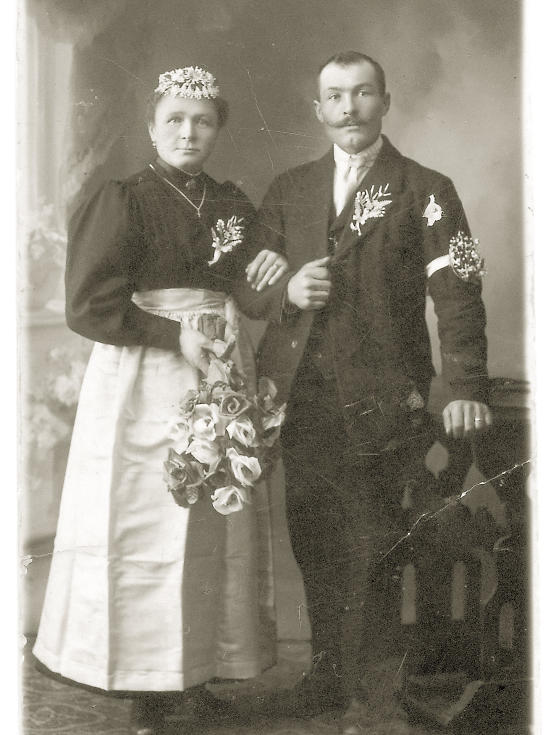
Ladin is primarily spoken in the five valleys surrounding the Sella massif: Buchenstein, Ampezzo, Val di Fassa, Val Gardena and Val Badia. These valleys are spread across two regions – Trentino-Alto Adige and Veneto – and three provinces: Bolzano, Trento and Belluno. In the valleys of the two autonomous provinces of Bolzano and Trento, Ladin is an administrative language and is used in public offices and the media.
Each of these five valleys has its own variant of the language with a distinct pronunciation, vocabulary and grammar: in Ampezzo, it is known as Anpezàn; in Buchenstein, as Fodóm; in Val di Fassa, as Fascian; and in Val Gardena, as Gherdëina. In Val Badia – the largest Ladin-speaking valley in South Tyrol – there are as many as three dialectal variants: in the lower part of the valley, around Enneberg, the local dialect is known as Marou; in the central section, it is referred to as Ladin de mesa val; and in the area of Alta Badia, it is called Badiot.
An attempt to create a standard Ladin language, Ladin Dolomitan, was made in 1994, but it has yet to gain official recognition. Related languages can also still be found today in Friuli (Furlan) and in the Swiss canton of Grisons (Grijun).
Language is an organism that is constantly evolving and adapting.
Noam Chomsky, linguist, philosopher, social critic
Like Italian, French and Spanish, Ladin (from the Latin Lati - nus, meaning “Latin”) is a Romance language. Its beginnings, like so much in the Alps, date back to the arrival of the Romans in 15 BC. At that time, most people in the Alpine region belonged to various Rhaetian tribes. With the expansion of the Roman Empire, these Rhaetian peoples were gradually Romanised, abandoning their pre-Latin languages and adopting the language of their conquerors – Vulgar Latin. Over time, this evolved into an Alpine Romansh vernacular, from which the different Ladin dialects eventually emerged.
The turbulent era of the Roman occupation was followed by an equally intense period of migration. Many Romance-speaking regions became Germanised. Ladin survived largely due to the isolation of the Dolomite valleys.
For the next few centuries, the Ladins lived in relative seclusion, farming in their valleys. This isolation helped them preserve their cultural traditions and pass their language down through everyday life, family and community. The oldest known written Ladin text dates from this period – a decree from the year 1631, showing characteristics of the Val Badia dialect. Val Badia is thus considered the Ladin valley with the longest written tradition. In contrast, the Ladins passed down their stories, especially their rich world of legends, exclusively through oral tradition.


It was only in the second half of the 19th century that literary texts in Ladin began to emerge. The first known Ladin authors were mostly priests. One among these was the Val Badia native Micurà de Rü, the author of the first Dolomite Ladin grammar book, published in 1833, after whom the Ladin Cultural Institute in Val Badia is named.
But there were also poets, writers and scholars outside the clergy. The Val Gardena writer Matie Ploner, for example, wrote six short folk tales in Ladin as early as 1807. The Enneberg poet Angelo Trebo is regarded as the first Ladin poet, and the Colfosco-born Romanist and philologist Jan Batista Alton was the first Ladin to study his mother tongue at the university level. He collected songs, proverbs, anecdotes and rhymes in the language and wrote extensively about the Ladin dialects, as well as his people’s customs, traditions and ways of thinking. The first book written entirely in Ladin also dates from this period. Moreover, in 1870, priests from Val Badia, Ampezzo and Buchenstein founded the first association dedicated to preserving the Ladin language and culture: the Naziun Ladina.
The events of world politics eventually reached even a remote corner like the Dolomites – and with full force. The loss of 1,000 Ladin soldiers in WWI, the annexation of Ladin territories by Italy, the Fascist regime’s attempts at Italianisation and the emigration of a significant portion of the Ladin minority during the National Socialist transition into the Third Reich all had lasting and profound effects on the Ladin people and their language. Yet, even during this challenging time, the first known Ladin texts by a woman from Val Badia appeared – the Primizgedichte, a series of poems by Emma Dapunt (1921).
There is no language without culture, and no culture without language.
Edward Sapir, linguist, anthropologist and inventor of modern linguistics
The fact that Ladin – the oldest living language in South Tyrol – has survived for over 2,000 years is closely linked to the language’s connection with the cultural identity of the Ladin people. In the post-war period, they had to fight hard on many fronts for political recognition and participation and, consequently, the survival of their mother tongue. Their concerns were completely overlooked in the peace treaty concluded between Italy and Austria in 1946. It was not until the First Statute of Autonomy for the Trentino-Alto Adige region in 1948 that the Ladin minority was officially recognised. This statute granted Ladins the right to use Ladin place names in those municipalities where the language was spoken. In addition, Ladin was permitted to be taught in schools alongside German and Italian – a so-called parity school system, which remains in place in the Ladin valleys of South Tyrol, Val Badia and Val Gardena, to this day.
This school system, combined with the steady growth of tourism in the Dolomites and the general need for Ladins to adapt to the languages spoken outside their valleys, has resulted in the Ladins of South Tyrol living trilingually today.
Ladin was granted the status of a separate minority language in 1951. From 1972 onward, with the Second Statute of Autonomy, Ladins gained representation in the South Tyrolean provincial parliament, received their own school board and were given the opportunity to publish Ladin-language newspapers – such as the inter-valley weekly La Usc di Ladins, featuring contributions from all five Dolomite valleys – as well as to produce radio and television programmes in Ladin. A Ladin cultural programme has been broadcast on public radio since 1961, and daily Ladin television broadcasts have been on the air since 1988. Finally, in 1989, Ladin was formally recognised as South Tyrol’s third official language.
In the wake of WWII, various associations were established in the Ladin valleys to preserve, promote and develop the Ladin language and culture. Thanks to their continuous efforts, museums have been opened and cultural institutes have been founded, allowing for institutional support of the language and promotion of the culture. Alongside publishing scientific jour - nals, organising Ladin literary competitions and translating im - portant works into Ladin, these associations and institutes also produce and publish language textbooks, school grammar books and dictionaries – many of which are now available online. They also offer Ladin language courses. Recently, in collaboration with the Ladin Cultural Institute Micurá de Rü – the competence cen - tre for Val Badia and Val Gardena – the world’s first smartphone with a Ladin-language user interface was presented at unibz.
The cultural spring that Ladin has been experiencing since the end of WWII – reflected in Ladin literature and music through new forms of poetry and contemporary prose – offers hope that Ladin will survive the next 2,000 years, despite UNESCO’s grim prognosis. Because, as they like to say in Ladin: Le lingaz é l’anima de na comunité (Language is the soul of a community).
Verena Spechtenhauser is a book lover, freelance journalist and historian. After living in Innsbruck, Rome and Madrid, she currently lives and works in Merano where she writes about literature, nature, travel, architecture and design for a range of South Tyrolean newspapers and other editorial projects.
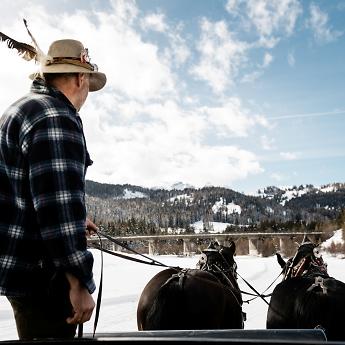
Where every scene becomes a memory and every memory a lasting connection to the mountains.

Interview with Anita Vittur, stylist, seamstress who creates traditional costumes, ski instructor and free spirit



































